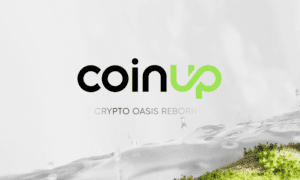In the digital age, the protection of sensitive information has become a paramount concern for businesses of all sizes. With cyber threats evolving at an alarming pace, organisations must arm themselves with robust strategies to safeguard their data assets. One critical aspect in the arsenal of security measures is the use of data leakage prevention tools, which serve to block the unintended or unauthorised transmission of confidential information outside the corporate network.
Understanding the Necessity of Data Leakage Prevention
Data leakage, also known as data loss, poses significant risks to a company’s competitiveness, legal compliance, and public image. The loss of intellectual property, customer details, and financial information can lead to irreparable damage, including financial penalties and erosion of client trust. Data leakage prevention tools are specifically designed to detect and prevent potential data breaches before they occur.
The Mechanics of Data Leakage Prevention
Effective data leakage prevention involves a comprehensive approach that encompasses several aspects of corporate data handling practices. These tools monitor, detect, and block sensitive data while in-use (endpoint actions), in-motion (network traffic), and at-rest (data storage). Advanced analytics is employed to understand data flow patterns and identify anomalies that could signal a potential breach.
Identifying Sensitive Data Across the Network
One of the primary capabilities of data leakage prevention tools is the identification and categorisation of sensitive data. This process usually involves deep content inspection and contextual security analysis of the information traversing through the network. By understanding the type of data and its relevance to organisational policies, the tools can apply appropriate security measures.
Choosing the Right Data Leakage Prevention Strategy
When selecting data leakage prevention tools, businesses must consider factors such as usability, integration capabilities, scalability, and customisability. The right solution should be agile enough to adapt to the changing data security landscape and the evolving needs of the business.
Implementation Challenges and Best Practices
Implementing data leakage prevention requires a well-thought-out strategy to ensure minimal disruption to business operations. Organisations must educate their workforce on the importance of data security, clearly define data protection policies, and ensure that security practices do not impede productivity.
Monitoring and Responding to Incidents
Effective data leakage prevention is not a set-and-forget solution. Continuous monitoring of system logs and alerts is vital for the timely detection of any unauthorised data handling activities. When an incident is detected, the response should be swift and well-coordinated to minimise potential damage and rectify any security gaps.
Adapting to Industry Regulations and Compliance Requirements
Regulatory bodies across the globe have tightened data protection laws in response to the increasing frequency of data breaches. Data leakage prevention tools must, therefore, offer functionalities that enable organisations to comply with industry-specific regulations such as GDPR, HIPAA, and PCI DSS.
Emphasising the Importance of Data Security Culture
While technology plays a critical role in securing information assets, the importance of fostering a strong data security culture within an organisation cannot be overstated. Employees should be trained on the value of digital hygiene, the correct handling of sensitive data, and the recognition of phishing attempts.
Maintaining Data Security in a Remote Work Environment
The rise of remote work has added another layer of complexity to data security. Data leakage prevention tools must be equipped to secure information across distributed networks and a myriad of personal devices. Businesses must implement security measures that cater to this new dynamic without hindering accessibility and collaboration.
Investing in Futuristic Data Leakage Prevention Solutions
As technology continues to evolve, data leakages are becoming more sophisticated. Organisations must invest in futuristic data leakage prevention tools that leverage artificial intelligence and machine learning to predict and preempt potential leakage scenarios.
The Cost of Ignoring Data Security Breaches
The cost of a data breach extends well beyond immediate financial losses. Reputational damage, legal consequences, and the loss of competitive advantage are long-term implications that can be far more expensive. This underscores the critical nature of implementing robust data leakage prevention mechanisms.
Ensuring Continuous Improvement and Evolution of Data Security Measures
The landscape of data safety is dynamic, with new threats emerging continually. It is imperative for businesses to stay ahead of the curve through constant evaluation and refinement of their data security protocols, including the regular assessment of their data leakage prevention tools.
Conclusion: Protecting Your Business’s Most Valuable Asset
In conclusion, the implementation of effective data leakage prevention tools is not a luxury but a necessity for businesses that value their data integrity. By incorporating advanced technologies that can adequately identify, monitor, and protect sensitive information, organisations can significantly mitigate the risk of catastrophic data breaches. In today’s digital economy, a vigilant approach to data security is the linchpin of a resilient and successful business model.

































